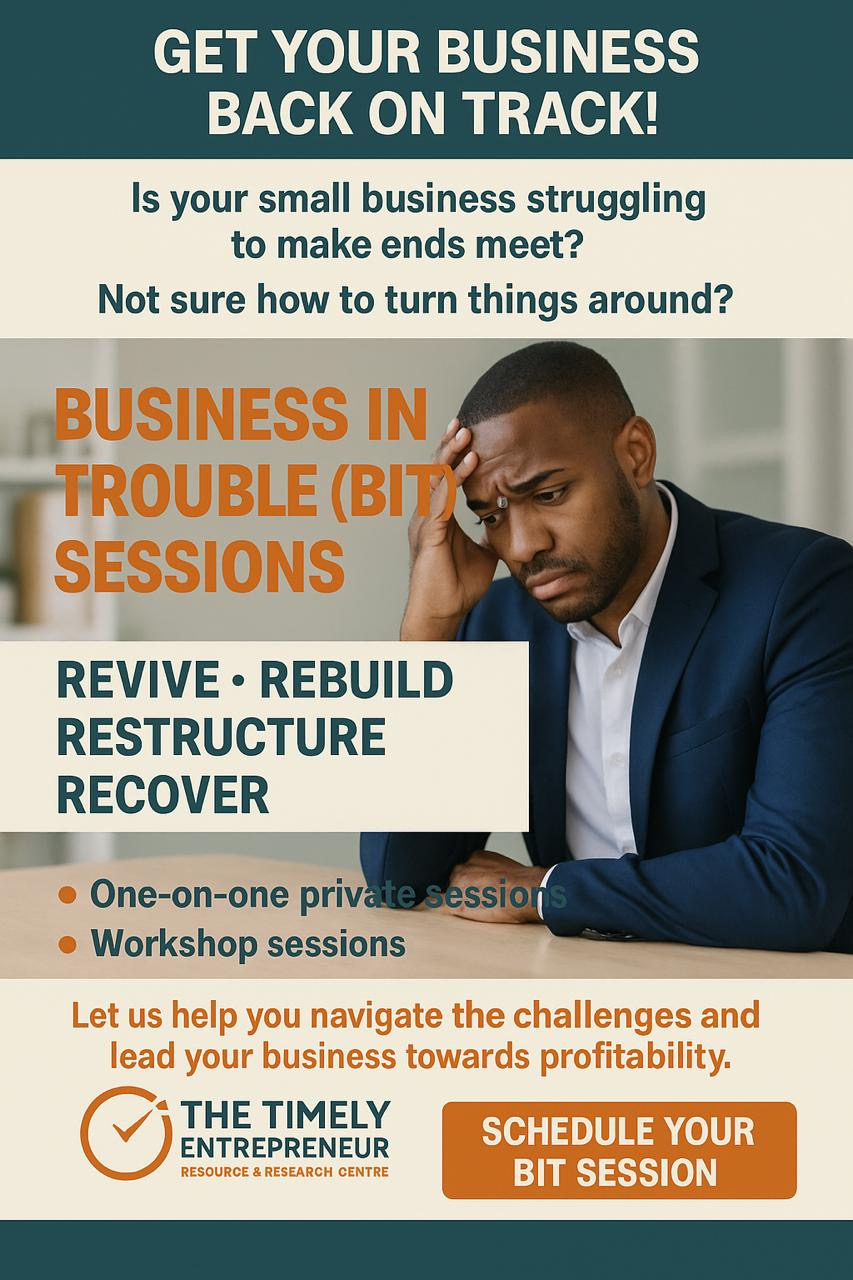
A Strategic Solution for Struggling Small Business Owners
Your Business May Be in Trouble — But It’s Not Beyond Repair.
If you’re grappling with low sales, cashflow problems, or marketing that’s just not working, The Timely Entrepreneur’s Business in Trouble™ (BIT) Sessions offer a fast, focused solution. These sessions are built for urgent action and meaningful change—designed to help small and growing businesses move from crisis to clarity with expert guidance and real-world strategies.
What Are BIT Sessions?
Personalised Business Help — When You Need It Most
BIT Sessions are one-on-one consultations tailored for small business owners who are overwhelmed, stuck, or simply not seeing the results they expected. Each session is structured to diagnose your biggest challenges and deliver clear, actionable steps to fix them—fast.
Whether you’re struggling to attract customers, secure financing, or make sense of your financials, a BIT Session will help you reconnect with your goals and find your way forward.
Why Book a BIT Session?
✔ Expert Insight – Work with professionals who understand the realities of entrepreneurship.
✔ Tailored Solutions – No fluff. Just strategies that work for YOUR business.
✔ Quick Results – Start implementing changes from day one.
✔ Local Understanding – We know the Caribbean context and what works in Trinidad & Tobago.
Don’t Wait for a Full Collapse. Act Now.
If your business feels like it’s barely staying afloat, now is the time to get help. BIT Sessions are built to provide fast clarity, structured planning, and lasting impact.
📞 Book your BIT Session today.
Start transforming your business with step-by-step strategies that work.
Frequently Asked Questions (FAQs)
Q1: How long does a BIT Session last?
A: Typically, between 60–90 minutes, depending on your specific challenges.
Q2: Can BIT Sessions help with getting a loan or opening a business bank account?
A: Yes. We assist with everything from cashflow planning to preparing the financials and pitch to present to banks or investors.
Q3: Is this service for startups too?
A: Absolutely. BIT Sessions are ideal for both new and established businesses facing roadblocks.
Q4: How much does a private BIT session cost?
A: A private BIT session costs TT$300/US$45 session
Q5: What do I get out of a BIT session?
A: You leave with the following:
- Diagnosis summary
- 3 Immediate Action Steps
- 1 Long-Term Strategy
- Recommended tools/resources
- Follow-up schedule
Q6: How many BIT sessions would I need?
A: Clients usually require just one BIT session. Larger projects that are a compilation of issues though, may require another session.
BIT Sessions are not just another consultation—they are your business’s emergency toolkit.
With the right help, even the most troubled business can find its way back to stability and success.
Ready to turn things around?
Book a BIT Session now — your business deserves it. Call or WhatsApp 18684880507 / 18687606221 or if it’s that urgent, let’s start here: Business in Trouble™ (BIT) Client Intake






